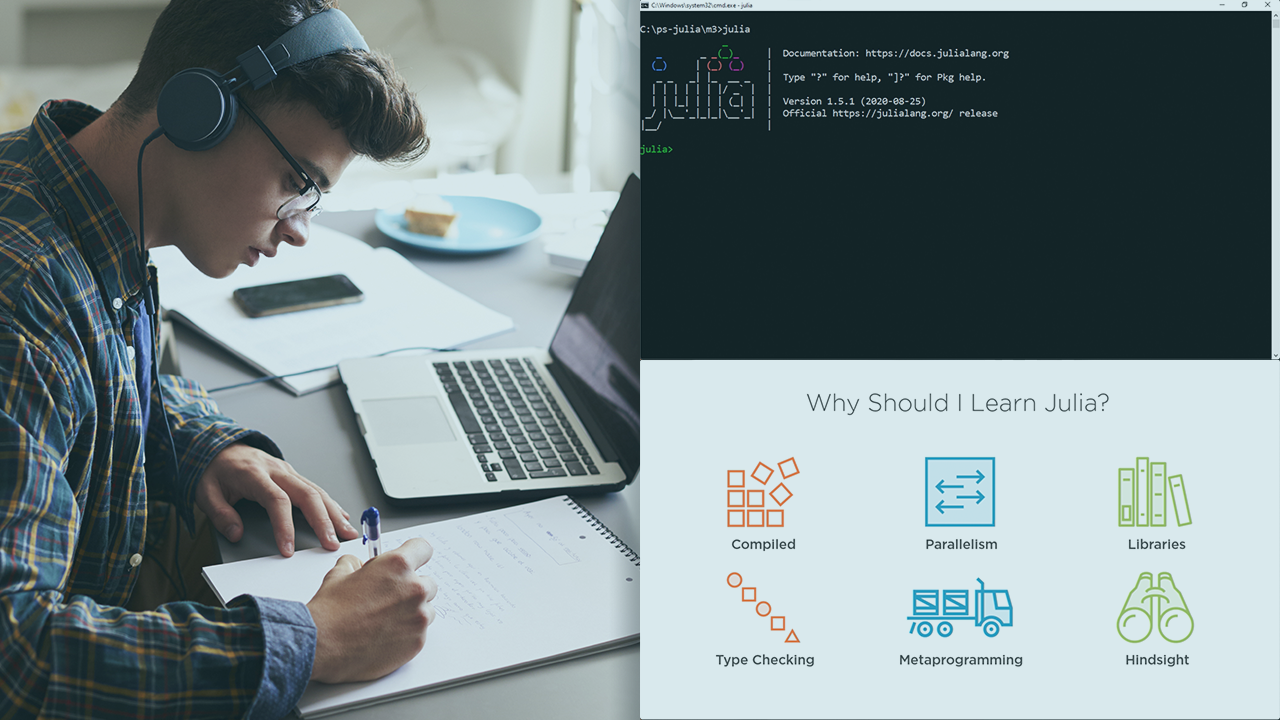- Course
Julia 1: Getting Started
Julia is a programming language designed for high performance that's used for Data Science, scientific domains, data visualization, parallel computing, and more. This course will teach you what you need to know to get started programming with Julia!

- Course
Julia 1: Getting Started
Julia is a programming language designed for high performance that's used for Data Science, scientific domains, data visualization, parallel computing, and more. This course will teach you what you need to know to get started programming with Julia!
Get started today
Access this course and other top-rated tech content with one of our business plans.
Try this course for free
Access this course and other top-rated tech content with one of our individual plans.
This course is included in the libraries shown below:
- Core Tech
What you'll learn
Every language has pros and cons... but what if I tell you that there is a language that was created with the experience of many other programming languages, with performance in mind, and that is able to provide all kinds of features available in general programming languages all the way to languages designed for scientific computing and Data Science?
Well, that's what Julia is all about.
In this course, Julia 1: Getting Started, you'll learn foundational knowledge required to be a Julia programmer. First, you'll learn how to set up your Julia development environment. Next, you'll discover how to define variables and use data types as well as control program flow. That will be followed by learning how to create functions, methods, and modules, as well as how to work with files. Finally, you'll see how to find packages that will help you build any application you can dream of.
When you're finished with this course, you'll have the skills and knowledge required to call yourself a Julia coder. Software required: Julia.

